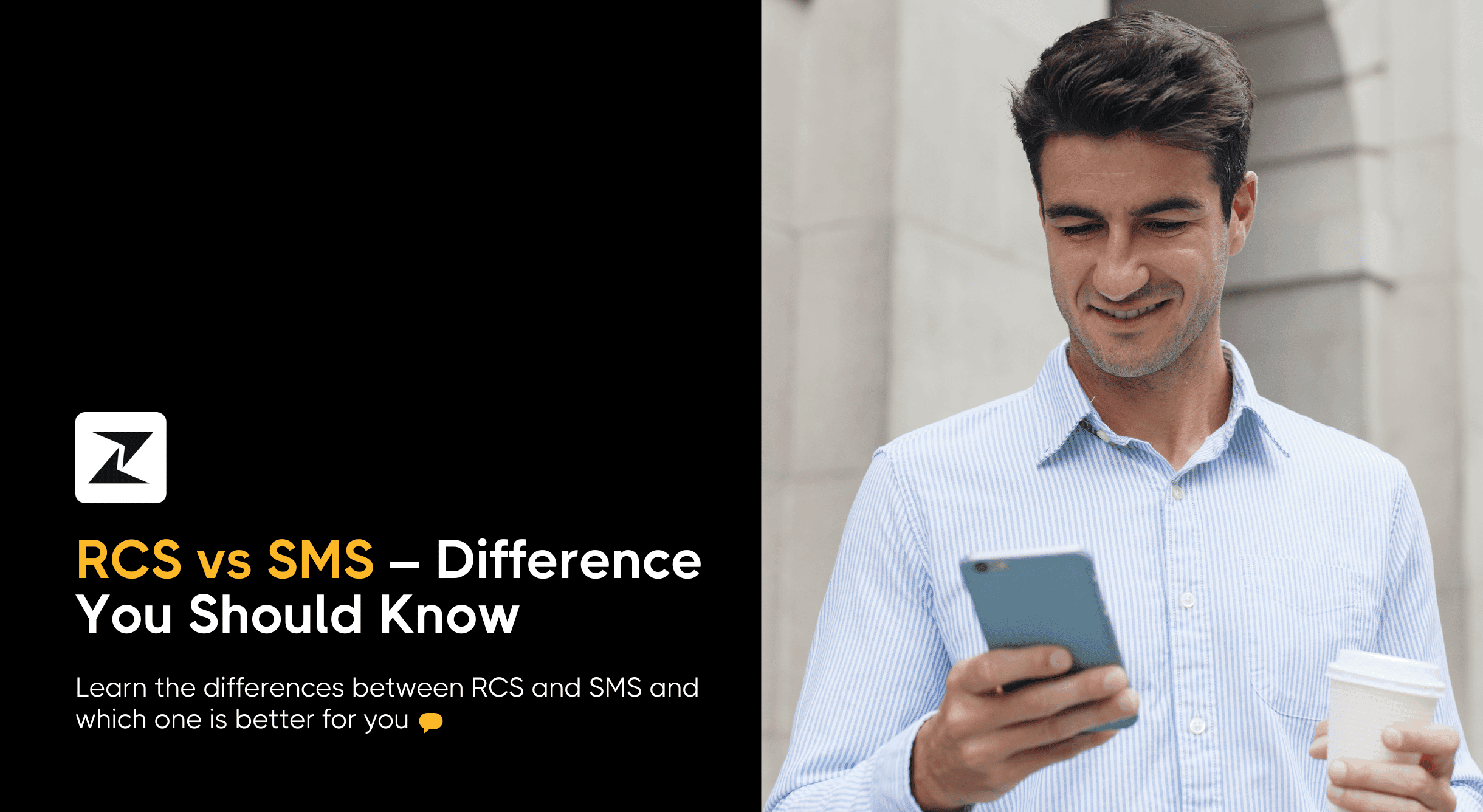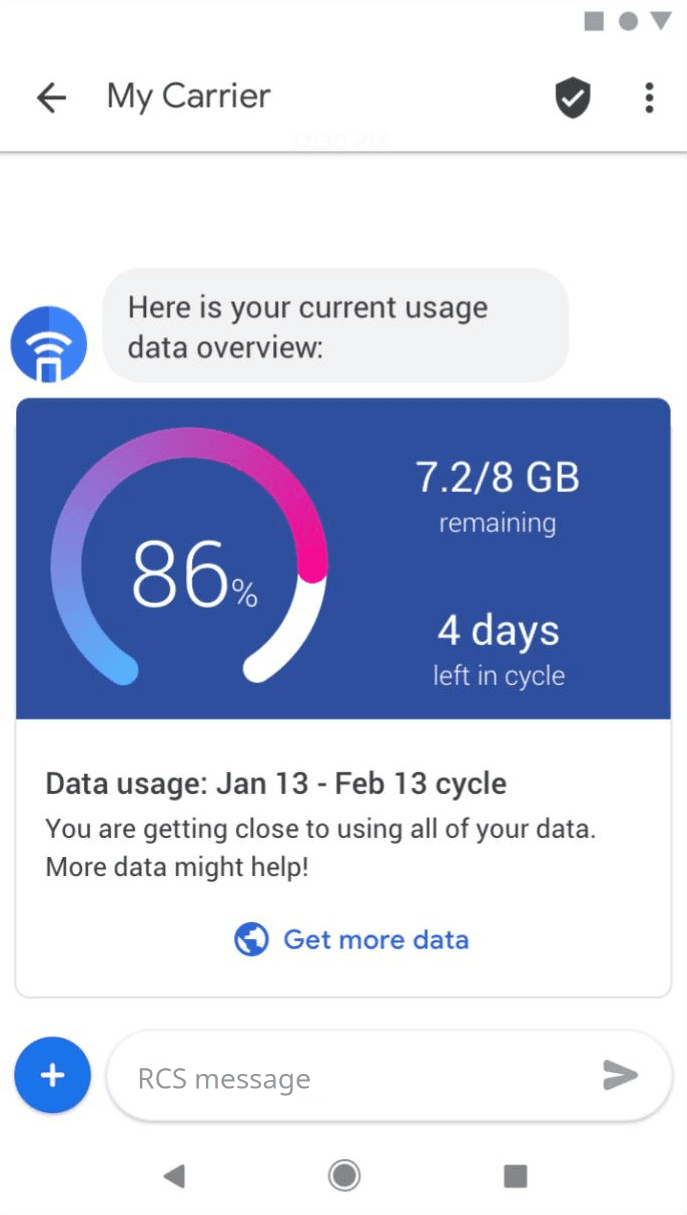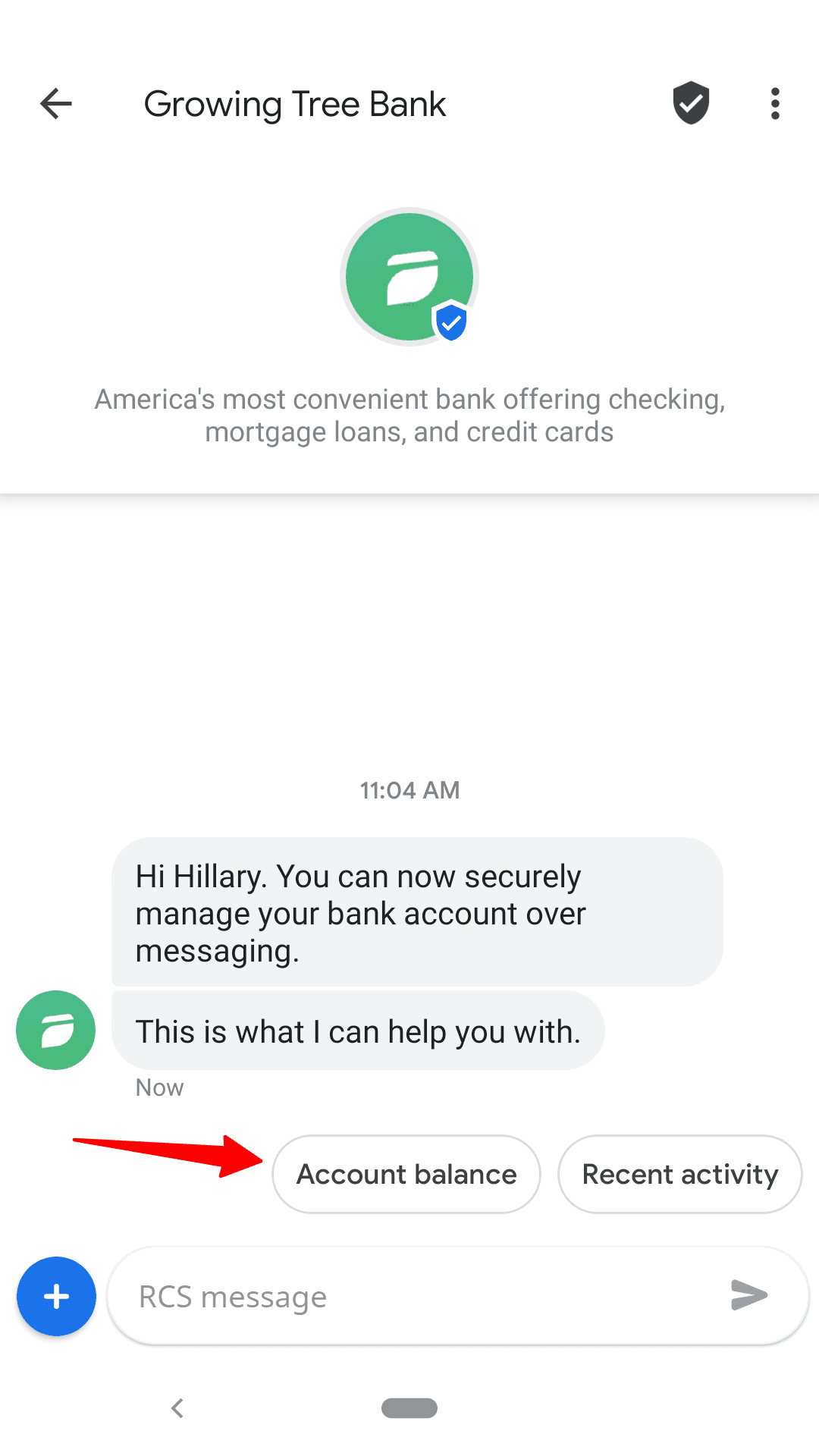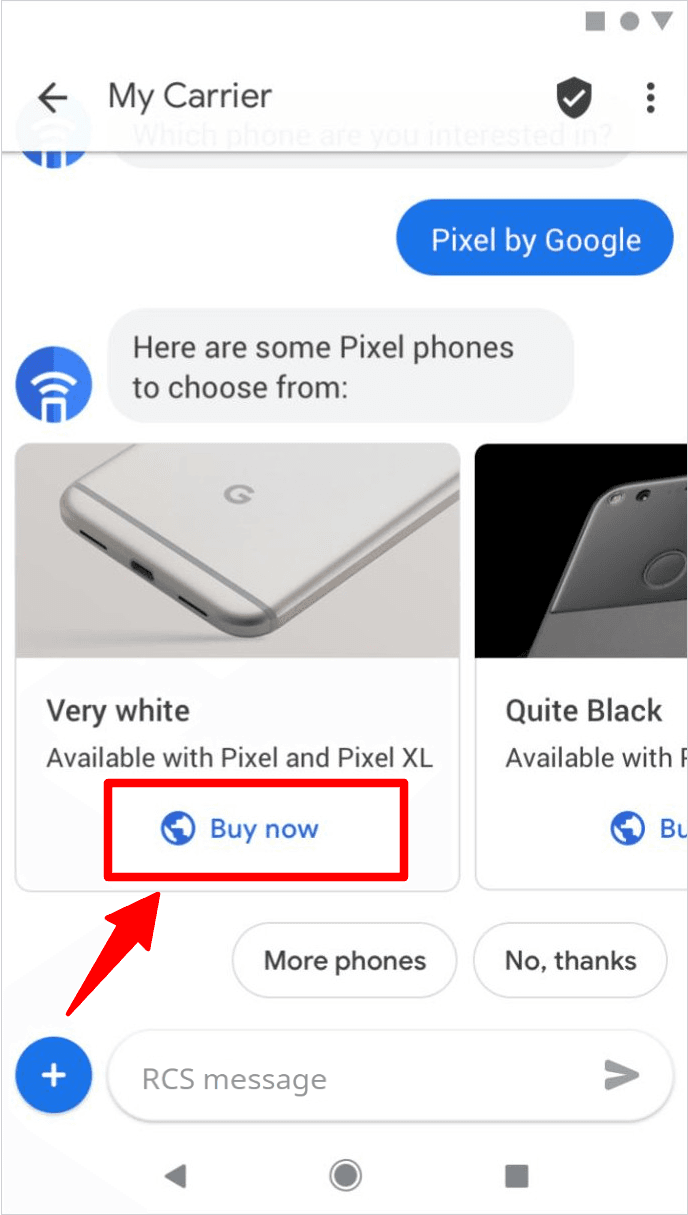RCS vs SMS: What’s the Difference & Which Is Better?

The first text message was sent more than 30 years back. It was a greeting, saying “Merry Christmas”. That was the starting point of mobile communication that went through multiple evolutions and transformed into the communication channel that we see today.
However, today, it is somewhat lagging behind other communication apps like WhatsApp, Messenger, and Apple’s iMessage. These apps support a wide variety of content, ranging from text messages to highly engaging videos.
So, to make SMS stand up to these OTT apps, RCS was introduced almost a decade ago for Android devices to provide a similar communication experience for 3.9 billion Android users around the world. This opens a whole new avenue for you to maximize your sales engagement strategies by connecting with a huge user base to scale your reach and establish your brand’s presence in the market.
But, between SMS and RCS, which one is the better fit for your business?
To answer that question, I’ll go over both of these channels comprehensively. I’ll also mention the key features of RCS messaging, as it is a relatively newer channel out of the two, and compare it with SMS to provide you a clear picture of their capabilities, functionality, and features to help you make an informed decision.
What is SMS?
In technological terms, if RCS is the newborn who recently started gaining attention in the industry, then SMS can be considered the grandfather of cellular communication. It is the oldest text-based conversational channel, which was a default for all mobile devices and allowed users to share information via basic messages.
It is a versatile and dependable channel, where you don’t need to be connected to the Wi-Fi or the data connection to exchange messages. It works on the same principle as phone calls that need cellular connectivity. This aspect of SMS makes it the best backup channel for implementing outbound sales strategies in case your customers are not connected to the internet.
Create and send tailored SMS messages to boost engagement and generate conversions to grow your businessBook Personalized Demo
Create and send tailored SMS messages to boost engagement and generate conversions to grow your business
Book Personalized DemoWhat is RCS?
Rich Communication Services (RCS) is a communication protocol that was developed with the objective of replacing SMS and providing users with a better communication channel that supports advanced communication features like enriched messages, high-quality media sharing, sending locations, and promoting your products or services.
Unlike SMS, which relies on carrier networks to send and receive messages, RCS messages are exchanged via the internet. This fact makes it much more cost-effective because you don’t have to subscribe to the SMS plan for sending RCS messages.
With RCS messages, you can reach out to customers and utilize the features of RCS to deliver top-notch customer engagement and use it to get more sales. Plus, an advantage of RCS is that it comes pre-installed with Android devices, so your customers don’t have to download any external apps to communicate with you.
Standout features of RCS messages
RCS offers you the ability to engage customers using HD cards, containing media-rich content to have structured chats to increase your likelihood of getting conversions. Having said that, let’s take a look at some of the amazing features of RCS in detail:
Enriched cards
RCS messages are sent in the form of cards that contain rich media components to provide all the necessary details to your customers. These cards are comparatively better than SMS because they only include text. Whereas you can attach images, videos, GIFs, stickers, and audio clips to the RCS messages.
Furthermore, you can send cards as a singular message or group multiple of them to build a carousel to enable your customers to check out your products without even visiting your site.

Suggested response buttons
Whenever you reach out to your customers, your conversations appear as chats, one below the other in continuous flow. And every time they receive a new message, the app automatically suggests possible replies to keep the conversation going.
They can easily tap these suggestions to reply back to your messages without having to type in their responses. They appear as suggestion clips (or lists) below the conversation or as threads within the cards.

Interactive elements
Even though “suggested replies” keep the conversation going, they are not enough to encourage customers to take action. For this reason, RCS messages also allow you to add interactive buttons to guide customers to the next stage of the sales pipeline.
These buttons allow you to take advantage of other apps already installed on the customers’ devices to further improve your marketing initiatives. For example, using interactive actions, you can compel customers to take the following actions:
- Visiting a site via browser
- Booking meetings
- Redirect to product-specific landing pages
- Sharing and receiving location through an in-built map

RCS vs. SMS: Comparing both channels to find the right match
Before you consider adopting RCS as a marketing channel in your sales engagement model, let’s compare both these channels to identify which one is the correct option for your business.
Reach
When it comes to connecting with your customers or exploring an untapped market, SMS offers universal reach. The reason is that each smartphone comes with basic texting functionality, allowing it to receive and send SMSs. This aspect of SMS marketing makes it an ideal channel for contacting almost all of your customers.
However, SMS has its limitations as well. Being a text-only channel, you can only send basic messages with simple CTA links to redirect recipients to your website or store.
RCS, on the other hand, might be a little slow in adoption, but that doesn’t mean it falls behind SMS by a long shot. RCS functionality will be a default part of all Android devices, allowing you to reach out to billions of Android users.
Additionally, if your customers are not connected to the Wi-Fi, then the RCS messages will be delivered like traditional SMS. This way, you can ensure consistent engagement without having to resend the same messages again.
Interactive and engaging messages
This is the biggest difference between RCS and SMS. SMS offers minimalistic marketing features, limiting your ability to personalize your messages with eye-catching visuals and audio. If you want to send a media-rich message, you will have to go for an MMS, but that too, falls short in comparison to RCS.
RCS allows you to tailor your messaging content with attractive graphical elements to interact with your customers. These features are an excellent way to convince customers to check out your brand and its product, all from their messaging app.
Dependability and deliverability
SMS, being a cellular-based channel, is highly reliable with an outstanding service record. Even in remote regions where network strength is below average, SMS messages can be delivered most of the time, making sure the information gets conveyed without any interruptions.
Contrary to that, RCS depends on internet connectivity or data networks to effectively send and receive messages. Since it relies on data networks, it might not offer the same deliverability as SMS if your recipients are in areas of bad network coverage.
Well, there were some of the major differences between RCS and SMS. If you want to take a look at the complete comparison of these two channels, then here is a table for your convenience:
| Features | RCS | SMS |
|---|---|---|
| Ease-of-use | Pre-installed messaging app that comes with all Android devices. | Built-in app for sending and receiving messages. |
| User base | Almost 4 billion Android users. | All the smartphone users. |
| Characters-per message | No strict character limit. | 160 characters per SMS. |
| Multimedia functionality | Supports media-rich cards containing visuals, text, stickers, and audio files. | Does not support visual elements. |
| Engagement rates | Extremely high engagement rate with 90% of messages being read in under 15 minutes. | Very high, with open rates of 90%. |
| Verified business profile | RCS messages include your company’s logo, and your brand’s name will be visible at the top of the chat with verified status. | Need to have verified Sender IDs. The registration requirements vary depending on your country. |
| End-to-end encryption | Yes, messages and group chats are secured. | No, SMS messages are protected with basic security. |
| Read Receipts | Yes, shows if and when your messages are read. | No |
| Document sharing | Yes, it depends on carriers and can go up to 100 MBs. | Yes, with file size of 300-600 KBs. |
| Call-to-action buttons | Yes, interactive buttons to encourage actions. | No, only supports embed CTA links. |
| Suggested replies | Yes, for quick responses to keep the conversation going. | No |
| Share location | Yes, utilizing the in-built map app. | No |
RCS vs. SMS: Find the right match for your messaging strategy
Depending on your marketing objectives, you have to choose the correct messaging channel that can help you hit those goals and drive high ROI to grow your business. If you want to send basic text messages with just a CTA link to direct customers to your website or store, then you can make do with SMS messages.
On the other hand, if you want to deliver a more engaging customer experience full of visual elements like videos, pictures, or relevant files, then RCS is the channel for you. Additionally, RCS allows you to send interactive buttons to make it easy for customers to take the next step.
So, before you decide to go for one, think about your contacts, the type of content you want to send, and your marketing budget to ensure your decision is based on actual research and not hunches. This way, you will be able to maximize your marketing efforts and elevate your brand to another level.
